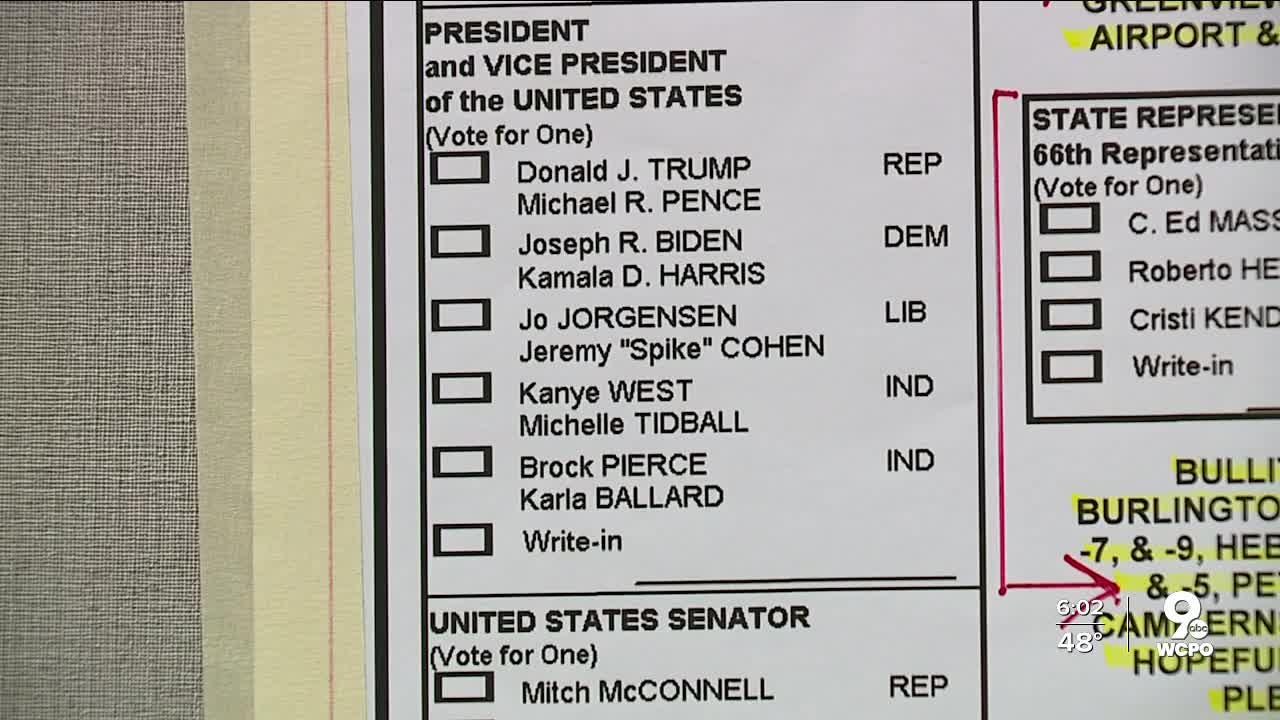Ohio and Kentucky counties still using paper ballots may have kicked punch cards and their hanging chads to the curb years ago, but the new ACT test-lookalike ballots still aren't completely foolproof either.
As records are being shattered nationwide for mailed in ballots, voters who may have made a mistake will have fewer options to catch and fix those errors than voters at the polls. Any need for a recount during an election with so many mail-in ballots could also be tricky.
Boone County owns 68 scanning machines built by Hart Intercivic, a contractor that also serves Kenton, Campbell and 95 other Kentucky counties. In Ohio, Hamilton County started using the same system in 2019.
"Most of the time, honestly, I'd say 90% of the time you can tell what the voter's intent was," said Justin Crigler, Boone County clerk. "There's one or two that could obviously be debatable, but for the most part you can generally tell."
Scanners are designed to eject a ballot and warn voters of any mismarks or poorly filled in bubbles on ballots, but Crigler said ultimately the onus is on the voters to catch their errors.
"If they stray outside the line a little bit, it will probably still count," he said. "But if they stray far or they 'x' it out and then circle another one, the machine will not read it and that, for that race, will not count."
In-person voters who want to start over can toss their "spoiled ballots" into secure boxes at the polls and try again, but voters mailing in their ballots will have to be careful to not make errors, since they'll likely not receive a new mail-in ballot in time.
The scanning machines typically detect voter intent, meaning it can read that a stray line was not intended when next to a filled in box. Machines are also designed to kick back any ballots where a voter has "over-voted," or filled in too many options on any particular category.
In close races, however, any mistake that causes a category to be rejected carries more weight and could also complicate any recounts, should the need arise.
"If there is a physical recount where we have to go view each ballot, it could come into play," said Crigler. "If there is a debate on that, that would go in front of our board."
The board in Kentucky is comprised of an equal balance of Republicans and Democrats, who then would vote to decide which ballot marks flagged as mistaken should count. Majority vote determines the outcome. In other areas, boards examine just a sampling of ballots by hand to compare with findings to electronic results.
The overall goal is to count votes the way a citizen intended to vote. The scanning systems help with most issues, but election officials caution that, to be safe, voters should be careful to clearly fill out the ballots with no mistaken marks.




